Jueves 02/07/15 La situacion del empleo
Re: Jueves 02/07/15 La situacion del empleo
Se crearon 223,000 empleos en Junio. El desempleo en 5.3%
- admin
- Site Admin
- Mensajes: 165406
- Registrado: Mié Abr 21, 2010 9:02 pm
Re: Jueves 02/07/15 La situacion del empleo
Crude Oil 57.32 0.36 0.63%
Brent Crude 63.25 0.78 1.25%
Gold 1164.7 -4.6 -0.39%
Silver 15.625 0.048 0.31%
E-mini DJIA 17721 50 0.28%
E-mini S&P 500
Brent Crude 63.25 0.78 1.25%
Gold 1164.7 -4.6 -0.39%
Silver 15.625 0.048 0.31%
E-mini DJIA 17721 50 0.28%
E-mini S&P 500
- admin
- Site Admin
- Mensajes: 165406
- Registrado: Mié Abr 21, 2010 9:02 pm
Re: Jueves 02/07/15 La situacion del empleo
Oil up 57.24
Au down 1,163
Los futures del Dow Jones 35 puntos al alza.
Au down 1,163
Los futures del Dow Jones 35 puntos al alza.
- admin
- Site Admin
- Mensajes: 165406
- Registrado: Mié Abr 21, 2010 9:02 pm
Re: Jueves 02/07/15 La situacion del empleo
Dow Jones
17,789.74 +31.83 (0.18%)
S&P 500
2,081.10 +3.68 (0.18%)
Nasdaq
5,014.03 +0.90 (0.02%)
17,789.74 +31.83 (0.18%)
S&P 500
2,081.10 +3.68 (0.18%)
Nasdaq
5,014.03 +0.90 (0.02%)
- alexander_7531
- Mensajes: 242
- Registrado: Vie Abr 23, 2010 10:57 am
Re: Jueves 02/07/15 La situacion del empleo
U.S. Economy Adds 223,000 Jobs; Unemployment at 5.3%
By NELSON D. SCHWARTZ
JULY 2, 2015
Good, but hardly great.
The economy added a healthy 223,000 jobs last month, the Labor Department reported Thursday, but other indicators, showing wages growing slowly and jobless Americans remaining on the sidelines, painted a grayer picture.
Indeed, while the unemployment rate fell to 5.3 percent, the lowest in seven years, that was driven largely by an exodus of people from the work force, rather than more Americans finding work. Moreover, the strong job gains for April and May, which had led many analysts to predict that the economy was picking up steam, were revised downward by 60,000 jobs.
Despite the drop in the unemployment rate, from 5.5 percent in May, average hourly earnings stayed flat, disappointing hopes that wages were finally increasing for many workers and suggesting that the labor market still has plenty of slack.
The share of American adults either working or looking for a job, which in many ways is a better gauge of economic robustness than the oft-cited jobless rate, fell 0.3 percentage point in June. With June’s drop, the labor participation rate is now at its lowest level since 1977.
“This was an okay report, but the unemployment rate didn’t go down for the right reasons,” said Liz Ann Sonders, chief investment strategist at Charles Schwab, Still, after bottoming out in March as the overall economy stalled, hiring has been reasonably strong if not spectacular inrecent months, along with other indicators like home sales and consumer spending. In the first half of the year, employers added workers at an average rate of 208,000 a month, compared with a monthly gain of nearly 260,000 jobs in 2014.
While the American economy is not delivering as many gains to workers as expected six years into the recovery conditions here stands in sharp contrast to the situation overseas. Europe has been rocked by the continuing drama over whether Greece will exit the eurozone, and concerns are rising about the fallout from the slowdown in China’s once white-hot economy.
Policy makers at the Federal Reserve are keeping a close eye on conditions abroad and volatility on Wall Street and overseas bourses, which could shift the timetable for the central bank’s long-awaited increase in short-term interest rates if markets show signs of panic.
So far, anything resembling the contagion of 2008 has not materialized, despite Greece’s slow-motion descent into financial chaos. Although the jobs data for June suggest a September rate increase by the Fed is still possible, experts caution that it is far from a lock given the uncertainty overseas.
The Fed and private economists have been watching participation in the labor market closely for any sign that millions of unemployed Americans who gave up and dropped out of the work force after the recession are finally looking for jobs again.
While exporters have had to contend with the headwinds from Europe, China and a stronger dollar, domestically focused sectors like construction, health care and education have supplied much of the labor market’s overall momentum.
What’s more, white-collar workers in fields like finance, insurance, software and marketing have been in high demand lately, a turnaround from the early days of the recovery when many new jobs tended to be in low-wage sectors like retailing and restaurants.
Since last summer, for example, the financial sector has added more than 100,000 new positions, bringing total employment in finance to just over eight million, the highest level since the fall of 2008, when Lehman Brothers collapsed. In June alone, insurers, investment companies and other financial institutions added 20,000 workers.
“We’re seeing companies put money into the back office,” said Tom Gimbel, chief executive of LaSalle Network, a Chicago-based staffing firm. “They want to hire for permanent positions in areas like marketing, human resources and accounting.”
Despite these signs of health, the American economy still has a feast-or-famine quality in many corners.
For example, wage growth has picked up slightly this year but gains remain relatively restrained. Over the last 12 months, earnings are up 2 percent.
Even as those back office, white-collar jobs are filled with workers who nearly always have a bachelor’s degree, Mr. Gimbel noted, employers also want college graduates for positions where a high school diploma used to suffice, like call center operators.
As the pool of college graduates has grown larger, younger workers have found themselves forced to take jobs they once would have turned down cold.
“More kids are going to college and some of them don’t have any choice,” Mr. Gimbel said. “It’s not just the Big 10, Notre Dame and the Ivies anymore.” Students from less prestigious colleges or candidates with lower grade point averages are taking jobs at call centers earning $25,000 to $30,000 a year, he said.
Preferred sectors for new college graduates entering the work force this summer, like sales, marketing and administration, pay in the range of $30,000 to $35,000 annually, Mr. Gimbel said. One major exception to the pattern of stubbornly slow raises is the technology sector, especially for workers fluent in coding, programming and software development.
“Depending on their level of experience, a good coder can earn $100,000 to $175,000,” he said. “We never have enough candidates.”
By NELSON D. SCHWARTZ
JULY 2, 2015
Good, but hardly great.
The economy added a healthy 223,000 jobs last month, the Labor Department reported Thursday, but other indicators, showing wages growing slowly and jobless Americans remaining on the sidelines, painted a grayer picture.
Indeed, while the unemployment rate fell to 5.3 percent, the lowest in seven years, that was driven largely by an exodus of people from the work force, rather than more Americans finding work. Moreover, the strong job gains for April and May, which had led many analysts to predict that the economy was picking up steam, were revised downward by 60,000 jobs.
Despite the drop in the unemployment rate, from 5.5 percent in May, average hourly earnings stayed flat, disappointing hopes that wages were finally increasing for many workers and suggesting that the labor market still has plenty of slack.
The share of American adults either working or looking for a job, which in many ways is a better gauge of economic robustness than the oft-cited jobless rate, fell 0.3 percentage point in June. With June’s drop, the labor participation rate is now at its lowest level since 1977.
“This was an okay report, but the unemployment rate didn’t go down for the right reasons,” said Liz Ann Sonders, chief investment strategist at Charles Schwab, Still, after bottoming out in March as the overall economy stalled, hiring has been reasonably strong if not spectacular inrecent months, along with other indicators like home sales and consumer spending. In the first half of the year, employers added workers at an average rate of 208,000 a month, compared with a monthly gain of nearly 260,000 jobs in 2014.
While the American economy is not delivering as many gains to workers as expected six years into the recovery conditions here stands in sharp contrast to the situation overseas. Europe has been rocked by the continuing drama over whether Greece will exit the eurozone, and concerns are rising about the fallout from the slowdown in China’s once white-hot economy.
Policy makers at the Federal Reserve are keeping a close eye on conditions abroad and volatility on Wall Street and overseas bourses, which could shift the timetable for the central bank’s long-awaited increase in short-term interest rates if markets show signs of panic.
So far, anything resembling the contagion of 2008 has not materialized, despite Greece’s slow-motion descent into financial chaos. Although the jobs data for June suggest a September rate increase by the Fed is still possible, experts caution that it is far from a lock given the uncertainty overseas.
The Fed and private economists have been watching participation in the labor market closely for any sign that millions of unemployed Americans who gave up and dropped out of the work force after the recession are finally looking for jobs again.
While exporters have had to contend with the headwinds from Europe, China and a stronger dollar, domestically focused sectors like construction, health care and education have supplied much of the labor market’s overall momentum.
What’s more, white-collar workers in fields like finance, insurance, software and marketing have been in high demand lately, a turnaround from the early days of the recovery when many new jobs tended to be in low-wage sectors like retailing and restaurants.
Since last summer, for example, the financial sector has added more than 100,000 new positions, bringing total employment in finance to just over eight million, the highest level since the fall of 2008, when Lehman Brothers collapsed. In June alone, insurers, investment companies and other financial institutions added 20,000 workers.
“We’re seeing companies put money into the back office,” said Tom Gimbel, chief executive of LaSalle Network, a Chicago-based staffing firm. “They want to hire for permanent positions in areas like marketing, human resources and accounting.”
Despite these signs of health, the American economy still has a feast-or-famine quality in many corners.
For example, wage growth has picked up slightly this year but gains remain relatively restrained. Over the last 12 months, earnings are up 2 percent.
Even as those back office, white-collar jobs are filled with workers who nearly always have a bachelor’s degree, Mr. Gimbel noted, employers also want college graduates for positions where a high school diploma used to suffice, like call center operators.
As the pool of college graduates has grown larger, younger workers have found themselves forced to take jobs they once would have turned down cold.
“More kids are going to college and some of them don’t have any choice,” Mr. Gimbel said. “It’s not just the Big 10, Notre Dame and the Ivies anymore.” Students from less prestigious colleges or candidates with lower grade point averages are taking jobs at call centers earning $25,000 to $30,000 a year, he said.
Preferred sectors for new college graduates entering the work force this summer, like sales, marketing and administration, pay in the range of $30,000 to $35,000 annually, Mr. Gimbel said. One major exception to the pattern of stubbornly slow raises is the technology sector, especially for workers fluent in coding, programming and software development.
“Depending on their level of experience, a good coder can earn $100,000 to $175,000,” he said. “We never have enough candidates.”
- alexander_7531
- Mensajes: 242
- Registrado: Vie Abr 23, 2010 10:57 am
Re: Jueves 02/07/15 La situacion del empleo
Merril Lynch ha recortado su previsión para el cobre a 5.000 dólares por tonelada para el próximo año ante el débil crecimiento de la demanda de China
- jonibol
- Mensajes: 2878
- Registrado: Mar Abr 27, 2010 9:51 am
Re: Jueves 02/07/15 La situacion del empleo
Hagan sus apuestas:
Bank of America recorta el precio objetivo de metales preciosos
RBC mejora su previsión sobre los metales preciosos
Fuente: Capitalbolsa
Bank of America recorta el precio objetivo de metales preciosos
RBC mejora su previsión sobre los metales preciosos
Fuente: Capitalbolsa
- jonibol
- Mensajes: 2878
- Registrado: Mar Abr 27, 2010 9:51 am
Re: Jueves 02/07/15 La situacion del empleo
jonibol escribió:Hagan sus apuestas:
Bank of America recorta el precio objetivo de metales preciosos
RBC mejora su previsión sobre los metales preciosos
Fuente: Capitalbolsa
Mira con lo de Grecia el oro ni ha estornudado.
- admin
- Site Admin
- Mensajes: 165406
- Registrado: Mié Abr 21, 2010 9:02 pm
Re: Jueves 02/07/15 La situacion del empleo
Ag down 15.58
Oil up 57.77
Ag down 15.57
-21.82
Oil up 57.77
Ag down 15.57
-21.82
- admin
- Site Admin
- Mensajes: 165406
- Registrado: Mié Abr 21, 2010 9:02 pm
Re: Jueves 02/07/15 La situacion del empleo
Los gráficos del día, 
.

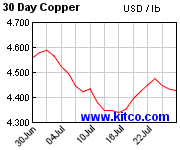
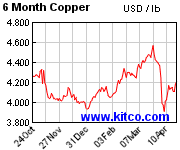
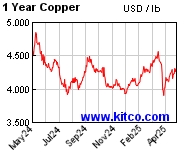
.

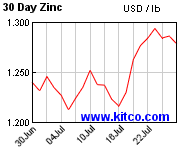
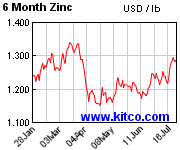
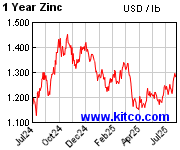
.

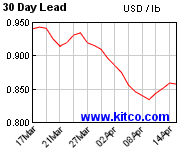
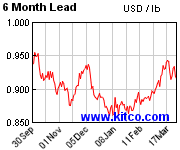
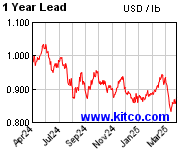
.
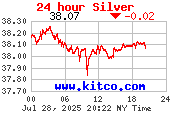
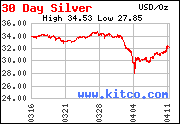
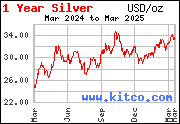
.
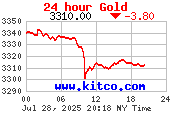
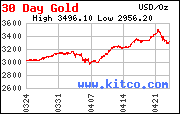
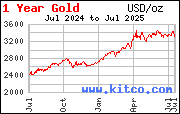
.
.




.




.




.



.



.
- Comodoro
- Mensajes: 980
- Registrado: Jue May 06, 2010 8:24 am
- Ubicación: LIMA
Re: Jueves 02/07/15 La situacion del empleo
Esto es lo que verdaderamente importa en las próximas elecciones.
-----
Débil reporte de empleo en EEUU debilita expectativas de alza de tasas en septiembre
Por Lucia Mutikani
WASHINGTON (Reuters) - El crecimiento del empleo en Estados Unidos se moderó en junio y muchos estadounidenses salieron de la fuerza laboral, debilitando las expectativas de que la Reserva Federal suba las tasas de interés en septiembre.
Las nóminas no agrícolas subieron en 223.000 el mes pasado, dijo el jueves el Departamento del Trabajo. La construcción se mantuvo sin cambios, pero el sector minero eliminó más empleos.
Acentuando el tono débil del informe, los datos de abril y mayo fueron revisados para mostrar que se incorporaron 60.000 posiciones menos de lo reportado anteriormente.
Al menos 432.000 personas abandonaron la fuerza laboral, por lo que la tasa de desempleo bajó dos décimas de punto porcentual a un 5,3 por ciento, el mínimo desde abril de 2008.
La tasa de participación de fuerza laboral, que es la proporción de los estadounidenses en edad laboral que están empleados o al menos buscan un trabajo, bajó a un 62,6 por ciento, la menor desde octubre de 1977.
La tasa de participación había tocado un máximo en cuatro meses de 62,9 por ciento en mayo.
El débil reporte de empleo, que sugiere que la economía podría haber perdido parte del impulso que recuperó recientemente, es un argumento en contra de un alza de tasas de interés del banco central estadounidense en septiembre, como esperaban muchos analistas.
Tras los datos, los contratos de futuros mostraron que los operadores veían el encuentro de la Fed de enero como el primero en el que es más probable un alza de tasas, en base a CME FedWatch, que sigue las expectativas usando los contratos de futuros de la tasa de los fondos federales.
"En cualquier caso, compra un poco de tiempo más para la Fed antes de la primera alza de tasas. Pone un poco más en duda a septiembre, pero nosotros todavía pensamos que ellos (la Fed) actuarán en septiembre", dijo Wilmer Stith, un gerente de cartera de renta fija en Wilmington Trust en Baltimore.
El dólar descendía frente a una cesta de divisas, mientras que los precios de la deuda del Tesoro estadounidense subían.
Las acciones estadounidenses abrieron con ligeras alzas.
Los economistas esperaban un crecimiento de 230.000 nóminas no agrícolas del mes pasado, con una reducción de la tasa de desocupación a un 5,4 por ciento.
Desde el gasto de consumo hasta los datos de vivienda, los reportes económicos habían mostrado un panorama sólido desde mayo, llevando a muchos a subir sus estimaciones del crecimiento económico del segundo trimestre a sobre un 3 por ciento anual.
La economía se contrajo a un ritmo de 0,2 por ciento en el primer trimestre.
PÁLIDOS SUELDOS
Las ganancias horarias promedio se mantuvieron sin cambios el mes pasado, por lo que el aumento anual quedó en un bajo 2,0 por ciento.
La sorpresiva debilidad del crecimiento de los salarios podría deberse a que el período del sondeo de las nóminas terminó el 13 de junio, lo que podría haber ejercido un sesgo a la baja.
Pero la evidencia anecdótica de otras mediciones del crecimiento salarial sugiere que la paga está mejorando.
Los gobiernos estatales y locales han subido el salario mínimo y los sondeos muestran que los sueldos iniciales para nuevos graduados están en alza.
Adicionalmente, Walmart, el mayor empleador privado del país, anunció incrementos salariales dos veces este año.
"Si continuamos recibiendo este tipo de reportes de nóminas en julio y agosto, la Fed no actuará en septiembre. Si ellos no ven crecimiento de salarios, podrían esperar hasta el próximo año", dijo Mark Zandi, economista jefe de Moody's Analytics.
Sin embargo, el informe laboral tuvo otras señales alentadoras.
Si bien la tasa de participación se desplomó el mes pasado, hubo mejoras en otras mediciones del mercado laboral que los funcionarios de la Fed están siguiendo mientras consideran elevar las tasas de interés por primera vez desde 2006.
Una medida amplia de la desocupación que incluye a la gente que quiere trabajar pero abandonó la búsqueda y los que están a tiempo parcial porque no pueden hallar empleo de tiempo completo bajó a un 10,5 por ciento, el mínimo desde julio de 2008, frente al 10,8 por ciento de mayo.
Adicionalmente, el número de desocupados de largo plazo continuó reduciéndose, a su menor nivel desde fines de septiembre de 2008.
-----
Débil reporte de empleo en EEUU debilita expectativas de alza de tasas en septiembre
Por Lucia Mutikani
WASHINGTON (Reuters) - El crecimiento del empleo en Estados Unidos se moderó en junio y muchos estadounidenses salieron de la fuerza laboral, debilitando las expectativas de que la Reserva Federal suba las tasas de interés en septiembre.
Las nóminas no agrícolas subieron en 223.000 el mes pasado, dijo el jueves el Departamento del Trabajo. La construcción se mantuvo sin cambios, pero el sector minero eliminó más empleos.
Acentuando el tono débil del informe, los datos de abril y mayo fueron revisados para mostrar que se incorporaron 60.000 posiciones menos de lo reportado anteriormente.
Al menos 432.000 personas abandonaron la fuerza laboral, por lo que la tasa de desempleo bajó dos décimas de punto porcentual a un 5,3 por ciento, el mínimo desde abril de 2008.
La tasa de participación de fuerza laboral, que es la proporción de los estadounidenses en edad laboral que están empleados o al menos buscan un trabajo, bajó a un 62,6 por ciento, la menor desde octubre de 1977.
La tasa de participación había tocado un máximo en cuatro meses de 62,9 por ciento en mayo.
El débil reporte de empleo, que sugiere que la economía podría haber perdido parte del impulso que recuperó recientemente, es un argumento en contra de un alza de tasas de interés del banco central estadounidense en septiembre, como esperaban muchos analistas.
Tras los datos, los contratos de futuros mostraron que los operadores veían el encuentro de la Fed de enero como el primero en el que es más probable un alza de tasas, en base a CME FedWatch, que sigue las expectativas usando los contratos de futuros de la tasa de los fondos federales.
"En cualquier caso, compra un poco de tiempo más para la Fed antes de la primera alza de tasas. Pone un poco más en duda a septiembre, pero nosotros todavía pensamos que ellos (la Fed) actuarán en septiembre", dijo Wilmer Stith, un gerente de cartera de renta fija en Wilmington Trust en Baltimore.
El dólar descendía frente a una cesta de divisas, mientras que los precios de la deuda del Tesoro estadounidense subían.
Las acciones estadounidenses abrieron con ligeras alzas.
Los economistas esperaban un crecimiento de 230.000 nóminas no agrícolas del mes pasado, con una reducción de la tasa de desocupación a un 5,4 por ciento.
Desde el gasto de consumo hasta los datos de vivienda, los reportes económicos habían mostrado un panorama sólido desde mayo, llevando a muchos a subir sus estimaciones del crecimiento económico del segundo trimestre a sobre un 3 por ciento anual.
La economía se contrajo a un ritmo de 0,2 por ciento en el primer trimestre.
PÁLIDOS SUELDOS
Las ganancias horarias promedio se mantuvieron sin cambios el mes pasado, por lo que el aumento anual quedó en un bajo 2,0 por ciento.
La sorpresiva debilidad del crecimiento de los salarios podría deberse a que el período del sondeo de las nóminas terminó el 13 de junio, lo que podría haber ejercido un sesgo a la baja.
Pero la evidencia anecdótica de otras mediciones del crecimiento salarial sugiere que la paga está mejorando.
Los gobiernos estatales y locales han subido el salario mínimo y los sondeos muestran que los sueldos iniciales para nuevos graduados están en alza.
Adicionalmente, Walmart, el mayor empleador privado del país, anunció incrementos salariales dos veces este año.
"Si continuamos recibiendo este tipo de reportes de nóminas en julio y agosto, la Fed no actuará en septiembre. Si ellos no ven crecimiento de salarios, podrían esperar hasta el próximo año", dijo Mark Zandi, economista jefe de Moody's Analytics.
Sin embargo, el informe laboral tuvo otras señales alentadoras.
Si bien la tasa de participación se desplomó el mes pasado, hubo mejoras en otras mediciones del mercado laboral que los funcionarios de la Fed están siguiendo mientras consideran elevar las tasas de interés por primera vez desde 2006.
Una medida amplia de la desocupación que incluye a la gente que quiere trabajar pero abandonó la búsqueda y los que están a tiempo parcial porque no pueden hallar empleo de tiempo completo bajó a un 10,5 por ciento, el mínimo desde julio de 2008, frente al 10,8 por ciento de mayo.
Adicionalmente, el número de desocupados de largo plazo continuó reduciéndose, a su menor nivel desde fines de septiembre de 2008.
- admin
- Site Admin
- Mensajes: 165406
- Registrado: Mié Abr 21, 2010 9:02 pm
¿Quién está conectado?
Usuarios navegando por este Foro: No hay usuarios registrados visitando el Foro y 23 invitados
